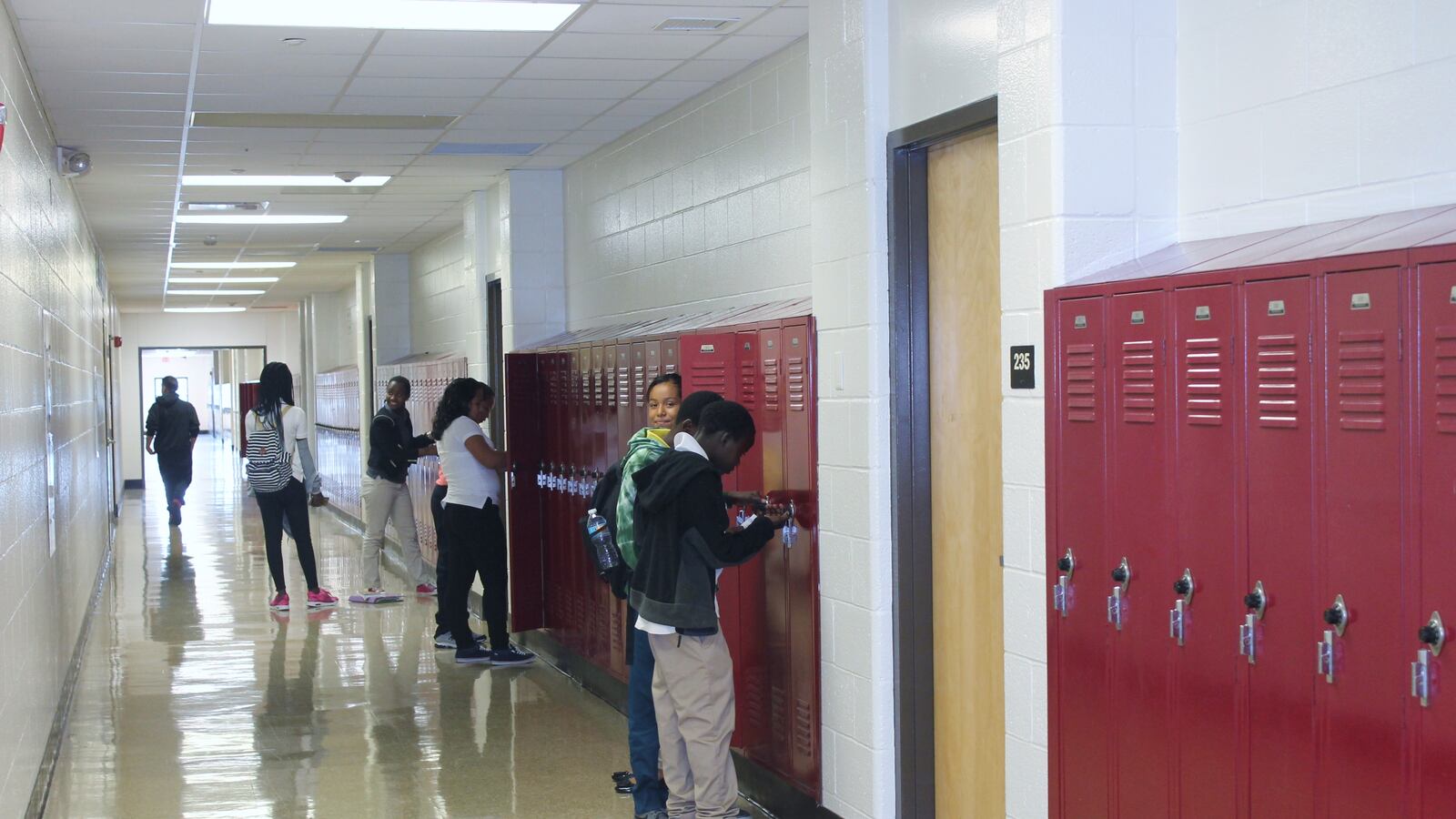Indiana lawmakers unveiled a revised budget Tuesday afternoon that would pump $539 million more into K-12 schools, increase teacher bonuses, reduce funding for virtual schools, and expand the state’s school voucher program.
The plan would also cushion potential funding cuts to high-poverty schools, proposing both a per-pupil increase in extra dollars for students from low-income families and a safety net for school districts projected to see declines in students who qualify for those additional dollars.
Both the House and the Senate are expected to hold final votes on the budget Wednesday, which is anticipated to be the last day of this year’s legislative session. The budget would then be sent to Gov. Eric Holcomb to sign, veto, or allow it to become law without his signature.
Holcomb stood with other Republican leaders Tuesday to laud the education spending increases as a “tremendous success,” as House Speaker Brian Bosma put it. But whether the budget proposal goes far enough to increasing teacher salaries to stanch teacher unrest remains to be seen.
Several school associations praised the budget plan, but notably absent were the teachers unions and teacher advocacy groups that stood beside lawmakers at the beginning of the session to work on the teacher pay issue. In the end, Republicans said they hope school districts would use overall funding increases of 2.5 percent each year, plus a reduction in districts’ retirement contributions, to increase teacher salaries.
Teresa Meredith, president of the Indiana State Teachers Association, said she wanted to see lawmakers funnel more money to teachers and schools, but she said the new budget draft still represents “a significant step.”
“In the next two years, we need to see the state actually do something and make some sort of plan on how to fund [teacher salary increases],” she said. “I know nobody likes to talk about taxes, but we have to figure out revenue sources.”
Lawmakers also want to put more dollars toward the Teacher Appreciation Grant program, which is specifically earmarked for merit bonuses. The budget draft calls for a $15 million increase over two years, raising the bonus pool to $37.5 million each year.
Additionally, Holcomb promised to work “on a long-term plan to systemically increase teacher pay.”
But Democrats also argued that the school funding plan would disproportionately benefit charter schools and private schools receiving publicly funded vouchers. They provided an analysis showing that charter schools would be projected to receive about a 10 percent bump in each of the next two years, while traditional public schools would only see about a 2 percent increase.
Those differences are likely caused by a $15 million boost to a grant to charter schools to make up for them not receiving local property taxes, projected increases in virtual charter school enrollment, and a broadening of the school voucher program.
“Republicans continue to prioritize unaccountable charter and voucher schools at the expense of traditional public schools,” House Democratic Leader Phil GiaQuinta said in a statement.
Here are some of the highlights of the budget draft:
- Reducing funding for virtual schools to 85 percent of the per-pupil amount that other public schools receive — down from the current funding level of 90 percent. Lawmakers would be cutting public dollars to the schools amid greater scrutiny of their chronic low performance, skyrocketing enrollment, and problems with keeping students engaged. Still, even with the funding decrease, some virtual charter schools could see an overall increase in state dollars as their enrollments are projected to rise. The reduction would also apply to online students enrolled at brick-and-mortar schools, such as Union School Corporation, which has recently added thousands of students through an online program.
- Sending more money to charter schools to make up for a lack of property taxes. The budget proposes increasing the charter school grant to $750 per pupil, up from $500 — which would result in an additional $15 million for charter schools over the next two years.
- Giving larger vouchers to families with incomes slightly above the free or reduced-price meal cutoff, a proxy for poverty.The school voucher program would also expand to allow students to start mid-year. The budget draft estimates the voucher program could grow to cost about $185 million by 2020, up from this year’s $161 million price tag. The budget would also raise the cap for tax-credit scholarships, continuing the gradual increase in recent years. The new limit would be $16.5 million by 2020, up from this year’s $14 million cap.
- Adjusting school funding halfway through the year. Indiana would return to the system of having a first “count day” in the fall and a second in the spring to determine funding levels. Currently, schools receive funding based only on enrollment in the fall.
- Pushing back the kindergarten cutoff to Oct. 1 by 2020. Lawmakers recently moved up the cutoff to Aug. 1, forcing some school districts to turn away children who turned 5 later in the year because the state wouldn’t provide funding for them until the following year.
- Increasing funding for preschoolers with disabilities for the first time since 1991. Funding would eventually increase by $250 per student by 2020.
- Increasing funding for English-language learners by $5 million.
- Studying extra funding for students from low-income families. Districts initially faced the prospect of significant cuts to funding meant to provide extra services for students living in poverty, and lawmakers have recently placed less emphasis on funding for high-needs children. The budget calls for a special committee to examine funding for high-poverty districts.

